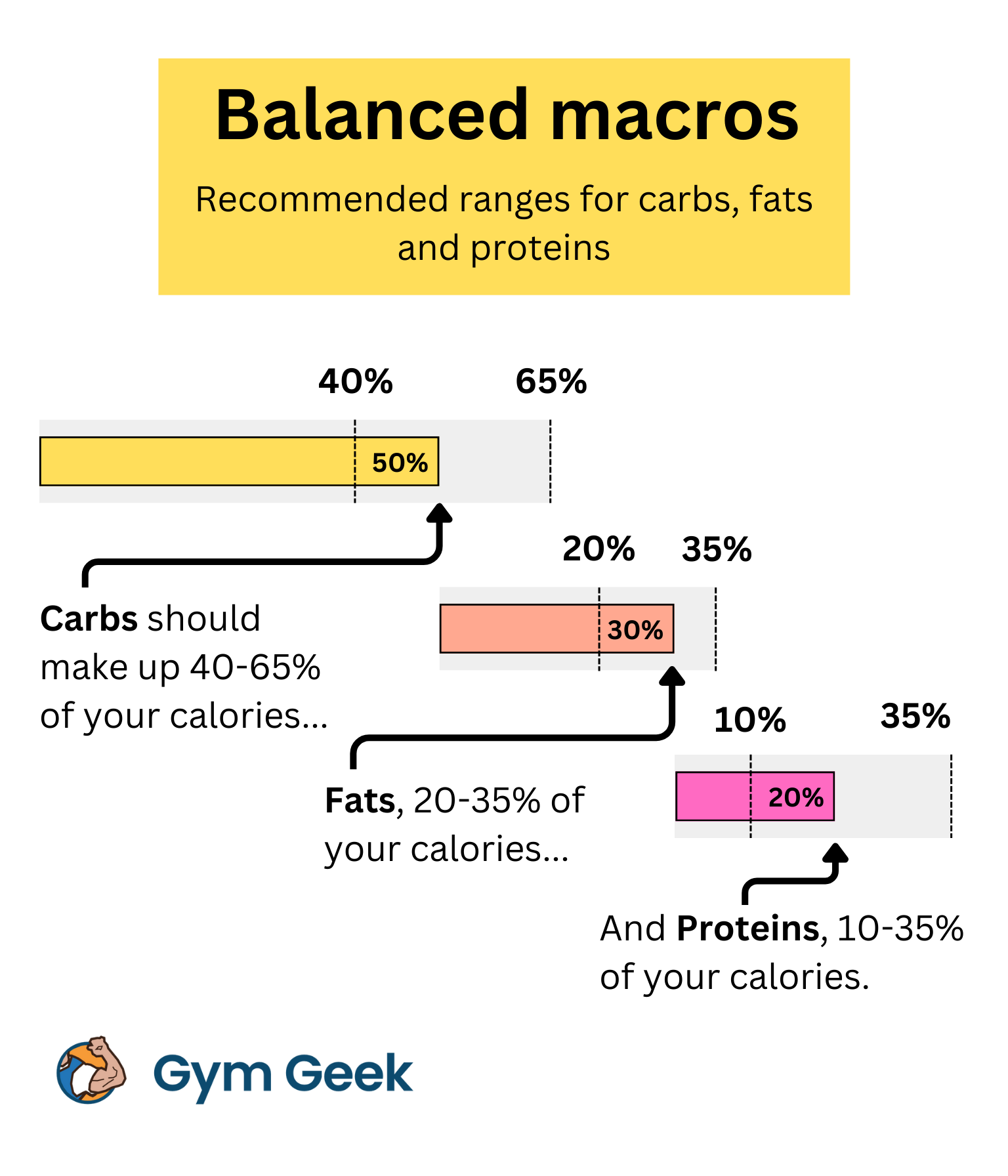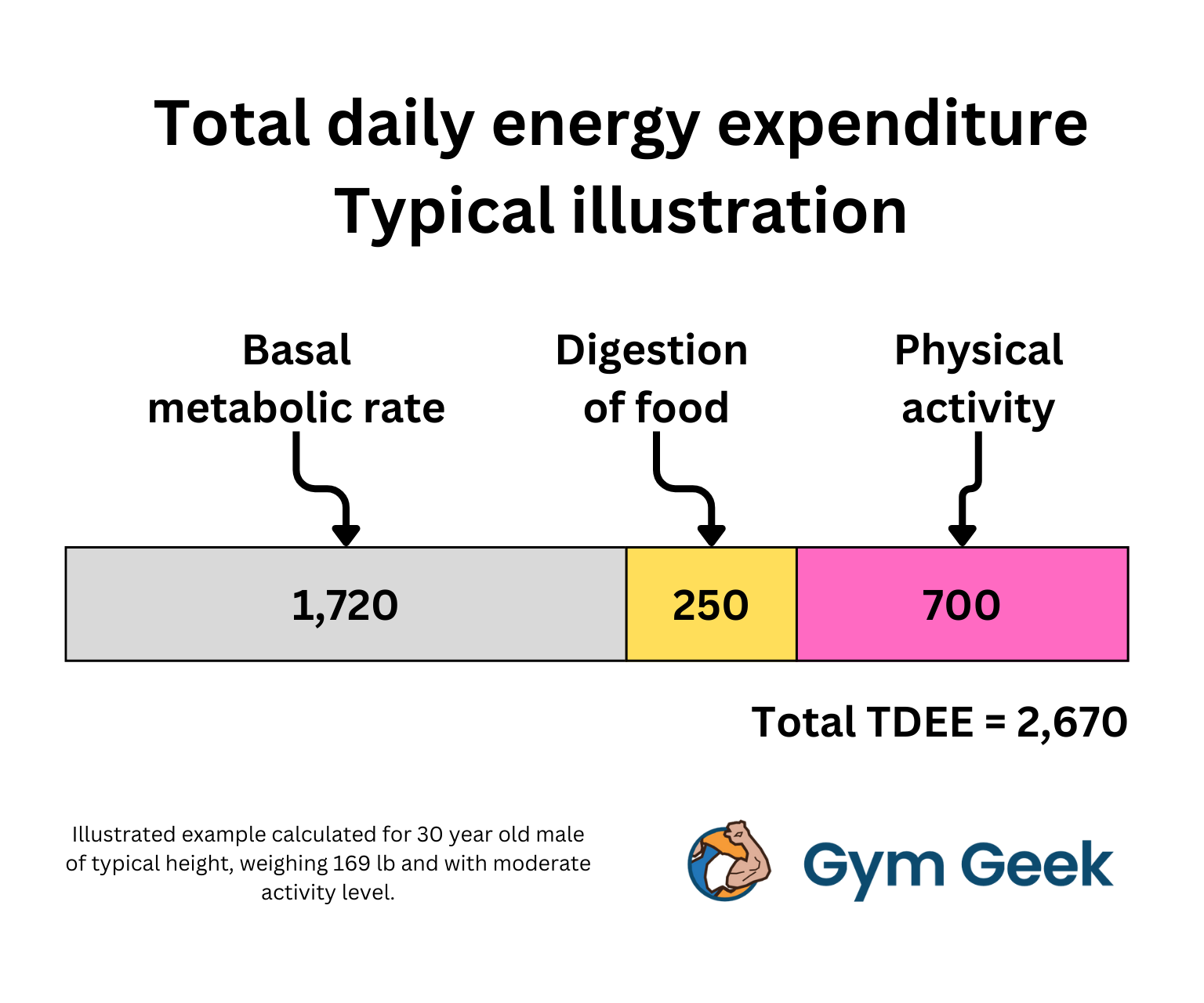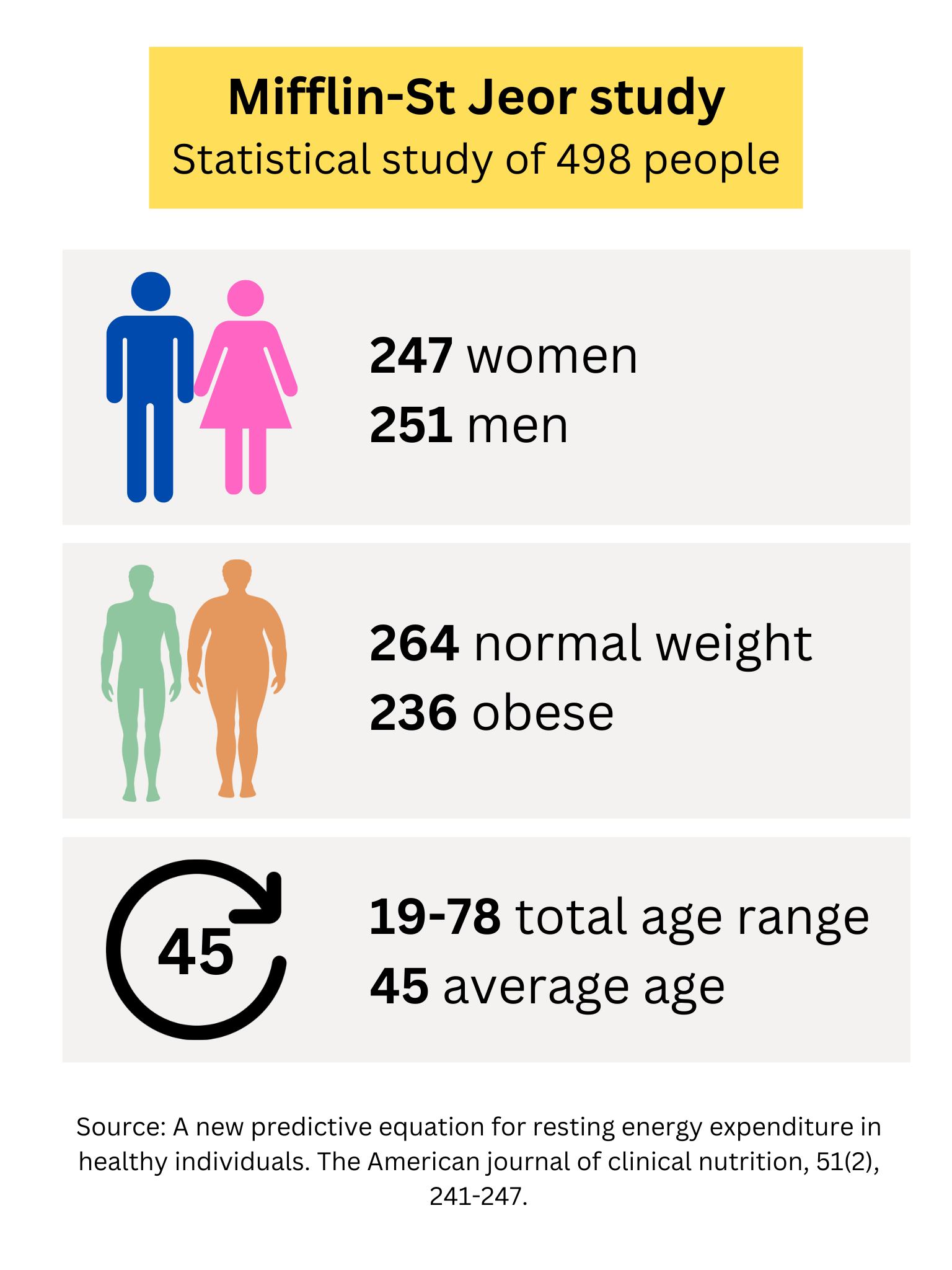Calories In, Calories Out (CICO): The Key to Weight Loss Explained
Most Popular Calculators

When it comes to losing weight, there’s a huge amount of conflicting information out there. Too often people are led to think that weight loss is about changing what or how you eat. Whether it’s intermittent fasting, keto or paleo, different kinds of diet have come and gone, each with a promise to be the secret to shedding the pounds.
But regardless of what you eat, how you eat or when you eat, the fundamentals of losing weight are actually very simple. The only thing that affects whether you lose or gain weight is the balance between the calories you consume and the calories your body burns each day.
We call this calories in, calories out (or CICO for short). If your number of calories in equals your number of calories out, you’ll neither lose nor gain weight. But if you reduce your calories in by eating less food (or increase your calories out by doing more exercise), you’ll create a calorie deficit.
Maintaining a calorie deficit over a sustained period of time is the only way you can lose weight. Let’s see how it works in practice…
What is CICO?
CICO stands for Calories In (CI), Calories Out (CO). It refers to the idea that weight management is all about balancing the calories you consume against the calories your body burns each day. The number of calories you burn is also known as your total daily energy expenditure (TDEE).
Behind the concept of CICO is the idea of energy balance. If the amount of energy (calories) in your diet is equal to the amount of energy your body needs to function, then everything is in balance. However, if you eat more calories than your body needs, your body will store the excess as body fat. This can lead to weight gain over time.
By the same logic, if you eat a calorie deficit (i.e. your calories in are lower than your calories out), then your body needs to make up the difference. It does this by using up the fat it previously stored. This leads to weight loss.
There’s no way around these basic facts. Energy balance is supported by the laws of thermodynamics. These laws say that energy cannot be created or destroyed, it can only be transferred or converted from one form to another. Without getting too technical, the main way this happens in the human body is by storing body fat when you eat too much and breaking down body fat when you are in deficit.
Calculate your TDEE
What exactly are calories, anyway?
Calories are a way to measure how much “energy” is in the food and drink you consume. In most parts of the world, calories are measured in kilocalories, or kcal for short. These are the numbers you see listed in the nutritional information section on food and drink items.
Your body uses the energy that comes from your diet to keep everything working normally. This includes basic functions like breathing and digestion, as well as powering your muscles for movement and exercise. Your body uses energy all the time to power different kinds of chemical processes. We call this your metabolism.
The calories in the foods you eat all add up through the day. If you total the number of calories you eat for breakfast, lunch and dinner, as well as any snacks, you can calculate your daily calorie intake. Understanding your daily calorie intake, as well as how many calories your body burns, is the key to weight management.
Macro diet vs CICO
Most calories in a typical diet come from carbohydrates, fats and protein. Carbs and protein both contain 4 calories per gram, while fat contains 9 calories per gram. For most people, a balanced diet consists of 40-65% carbohydrates, 20-35% fats and 10-35% proteins.

Many diets (like keto and paleo) are built around the idea of adjusting macronutrients up or down, as well as reducing overall calorie intake. But what impact does this really have and what does it mean for CICO?
In 2017, Scott Howell of Tudor Bompa Institute and Richard Kones of The Cardiometabolic Research Institute looked at the impact that calories and macronutrients had in obesity management. They found that the primary driver of weight gain or weight loss was not a result of varying the proportions of carbs and fat in the diet, but instead the result of varying the number of calories eaten.
This finding supports the idea that weight loss and weight gain is primarily driven by CICO, not by the particular composition of your diet. Balancing your macros can have benefits for your health, and protein is known to reduce your appetite, but it is only calorie restriction that will directly result in weight loss.
About calories out (CO)
The number of calories your body burns each day is called your calories out (CO), or more technically your total daily energy expenditure (TDEE). This number is not exact and fluctuates every day based on a number of factors.
For most people, the biggest contributor to calories out is your basal metabolic rate (BMR). BMR is the number of calories your body needs at total rest to power its most basic functions. This includes the baseline activity of your organs, but does not include the digestion of food. It also doesn’t include any calories you need for physical activity and exercise.
BMR typically increases with your weight and height, because you have a larger body mass to support. However, you can expect your BMR to decrease over time as you age. This is because most people lose muscle mass and gain fat as they age.

Unless you are sedentary, the second biggest contributor to your calories out are the calories you burn through exercise and physical activity. The final contributor to calories out, “thermic effect”, is the energy your body uses to actually digest the food you eat. This accounts for 10% of your calorie burn on a typical day.
Increasing your calories out
The easiest way to create a calorie deficit is on the calories in side of the equation, i.e. by eating fewer calories each day. But it’s also possible to create a calorie deficit with the calories out side of CICO. This is possible because, although you can do little to change your BMR, you do have total control over your physical activity.
Doing exercise burns calories, and the more you do the more calories get added onto your calories out. Since a calorie deficit is just the difference between calories in and calories out, this allows you to create a deficit simply by doing more exercise.
Even a small amount of exercise can have a big impact on your calories out. If you burn an extra 100 calories per day, over a week you will have burned 700 calories. That’s equivalent to 0.2 pounds of extra weight lost. Compound this over months and it starts to have a real impact on your weight loss journey.
Our 100 calorie fat burners are small amounts of exercise or physical activity that burn 100 calories in a short amount of time. Doing these exercises every day can increase your calories out, making it just a little easier to stay in deficit.
Measuring your calories out
Measuring your calories out directly is all but impossible. In fact, the only way to precisely measure your calories out is in a scientific setting with specialist equipment. It might seem then that CICO is all a bit… theoretical.
In reality, most people need to use a formula to estimate their calories out, usually called TDEE in this context. A number of formulas for estimating TDEE have been created over time. These formulas are produced by statistical studies that look at representative populations, measuring their metabolic rates and crunching the data to build accurate formulas.
The most popular formula is the Mifflin-St Jeor equation, which came out of a 1990 study of 498 people across both genders, all age groups and normal weight and obese persons. The study introduced a formula based on a person’s weight, height, age and gender.

Calorie calculator accuracy
Most calorie calculators use a formula like Mifflin-St Jeor to estimate your TDEE. Even though this number is an estimate, it’s reasonably accurate for most people. A study published in the Journal of the American Dietetic Association concluded that the Mifflin-St Jeor equation was more likely to estimate calorie needs to within 10% compared to other equations.
But calorie calculators do not account for specific factors like muscle mass. If you have a high muscle mass, you may find that a calorie calculator underestimates your TDEE. This is because muscle is more metabolically active than fat. And if you are overweight or obese, it’s likely that it will overestimate your TDEE.
When your start on a calorie deficit diet, it’s sensible to use the TDEE estimate from a calorie calculator. However, you should track your progress carefully over 4-6 weeks. If you are losing weight faster than expected, you might consider adjusting your TDEE higher. And if you are not losing weight fast enough, you might need to reduce your TDEE.
More accurate calories out
A more advanced way to estimate your calories out is using a method called adaptive TDEE. Adaptive TDEE is a range of methods that use your own data to produce a more accurate estimate of your TDEE.
Most adaptive TDEE algorithms are based on your calorie intake and bodyweight data over an extended period of time. They crunch this data to figure out a personalized and accurate number for your specific circumstances.
If you’ve been tracking your calorie intake closely, in theory you can get a more accurate TDEE number with just 2 months of bodyweight data.
Gym Geek’s adaptive TDEE spreadsheet uses some clever statistics to combine the Mifflin-St Jeor estimate with your own data. As you collect more of your own calorie and bodyweight data, the adaptive TDEE estimate adjusts up or down over time.
What about my metabolism?
Some people argue that CICO doesn’t work because they have a unique metabolism. Everyone’s metabolism is different, and there are many situations that cause a person’s metabolism to higher or lower than average:
- Muscle mass – Muscle is more “metabolically active” than fat tissue. That means people with more muscle mass have higher basal metabolic rates compared to those who have a high body fat percentage.
- Genetics – A person’s genetics is known to affect their metabolism. This is something that can’t be measured, so formulas like Mifflin-St Jeor effectively “average out” across all groups of people.
- Hormones – Many kinds of hormones have an impact on your body’s metabolism. Every person has slightly different levels of hormones, which can impact your metabolic rate. Conditions like hypothyroidism or hyperthyroidism can substantially decrease or increase a person’s metabolism.
- Diet – A high protein diet is associated with slightly higher TDEEs. This is because digesting proteins requires more energy than digesting carbs or fats.
But just because you have a lower or higher metabolism than average doesn’t mean that CICO doesn’t work. You just need to account for this in the calories out side of the CICO equation. If your metabolism is substantially different to average, you’ll need to adjust your calories out up or down as appropriate.
If you have a slower metabolism, this means reducing your TDEE estimate. Because of this, you’ll also need to reduce your calories in to maintain the same deficit. In other words, you’ll need to eat less food than if you had an average metabolism.
This all comes back to the same point we made above… it’s not easy to measure your calories out directly. You’ll need to rely on TDEE estimates and manual adjustments up and down, or use a more complicated adaptive TDEE estimate.
Tracking your calories
Most people are bad at estimating how many calories they eat per day. In fact, if you had to guess, it’s not unusual to be 50% or more off the true value. A person could think they were eating 1,500 calories per day, when reality could be more like 2,200 calories.
To make the most of CICO, you need to understand the numbers on both sides of the equation. On the calories in (CI) side, this means tracking exactly what you eat and drink. There are a number of ways you can do this:
- Using an app – The recommended way to track your calories is with a calorie tracking mobile app. With these apps, you use a food diary to catalog all the food and drink you consume. There’s a large number of calorie tracking apps, with some using a database, others scanning barcodes and newer apps using AI.
- Smart kitchen scales – Smart kitchen scales allow you to measure your food, and enter a nutritional code at the same time. They typically come with a code booklet that contains different categories of food and drink. You enter the code, measure your food and record the calories from the scale.
- Pen and paper – If you find apps and kitchen scales a bit awkward, you can just use a pen and paper food diary. For each day, write out what you consumed and keep a running total.
Hidden calories
For the best results, you’ll need to track every single calorie (within reason). If you’re new to calorie counting, it’s tempting to just record the ‘big items’ in your diet. This makes some sense, but you might be surprised to find large numbers of calories in foods you didn’t even think about.
We call these foods hidden calories. Here are the most common:
- Cooking fats – Cooking oils, butters and other fats are incredibly calorie dense. You might not think to track the oils in a recipe, but a single tablespoon of cooking oil can contain over 100 calories.
- Condiments and sauces – Ketchup can contain 20 calories per tablespoon, so it quickly adds up. Mayonnaise, ranch dressing and other fatty sauces can contain up to 100 calories per tablespoon.
- Nuts and dried fruit – Nuts and dried fruit can be healthy snacks, but it’s important to eat in moderation. Single servings can contain 200-300 calories. Granola bars can also be calorie dense.
- Fruit juice – Fruit juice, soda and other sweet drinks can contain hundreds of calories per serving.
- Honey and syrups – Primarily made up of sugars, these can contain 70-100 calories per tablespoon.
Tracking activity and exercise
Just as most people underestimate how many calories they eat, they also tend to overestimate how many calories they burn from exercise. This affects the calories out side of the CICO equation.
You may have a smart watch or fitness watch that can track your steps, runs or other types of exercise. These watches are a convenient way to track your exercise calories, and many of them connect straight up to calorie tracking apps.
Unfortunately, smart watches and fitness watches are known to be fairly inaccurate. For this reason, we recommend not using them to estimate your exercise calories. Instead, we prefer to simply use a standard activity factor when estimating your TDEE.
References
Howell, S., & Kones, R. (2017). “Calories in, calories out” and macronutrient intake: the hope, hype, and science of calories. American Journal of Physiology-Endocrinology and Metabolism.
Mifflin, M. D., St Jeor, S. T., Hill, L. A., Scott, B. J., Daugherty, S. A., & Koh, Y. O. (1990). A new predictive equation for resting energy expenditure in healthy individuals. The American journal of clinical nutrition, 51(2), 241-247.
Frankenfield, D., Roth-Yousey, L., Compher, C., & Evidence Analysis Working Group. (2005). Comparison of predictive equations for resting metabolic rate in healthy nonobese and obese adults: a systematic review. Journal of the American Dietetic association, 105(5), 775-789.

